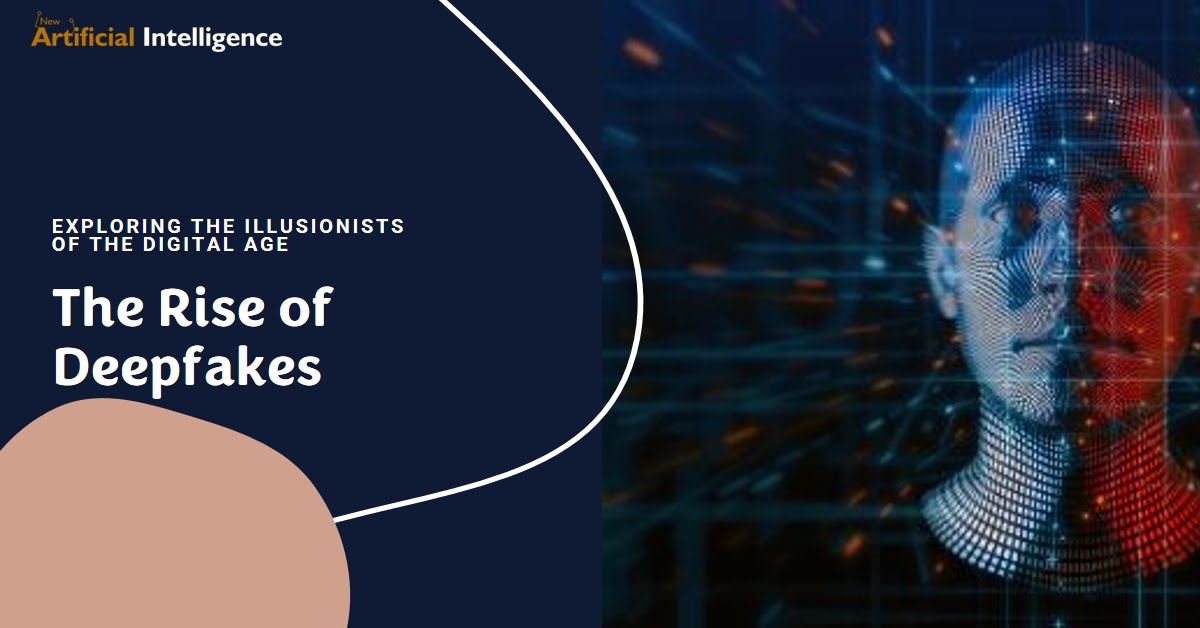Exploring Deepfakes in the Digital Age
Table of Contents
Imagine watching a video of your favorite movie star announcing or doing something entirely out of character. Or encountering an information record in which the interviewer’s words appear eerily manipulated. This, my pals, is the unsettling global of deepfakes – artificial media meticulously crafted to mislead, entertain, or maybe manage.
Unmasking the Myth:
The term “deepfake” is an intelligent portmanteau of “deep mastering” and “faux,” aptly describing its origin. These hyper-practical creations leverage the magic of deep mastering algorithms, a specialized department of synthetic intelligence, to seamlessly merge current video and audio with fabricated elements. The consequences may be compelling, every so often blurring the lines between fact and fiction to the point of close to indistinguishability.
From Fun to Fury:
While deepfakes initially emerged as a playful tool for enjoyment and parody – don’t forget the hilarious celeb voice swap movies. – their skills have unexpectedly expanded into more unsettling avenues. The growing sophistication of the generation and growing accessibility of deepfake introduction tools have opened doors for malicious actors to take advantage of their capacity for incorrect information, fraud, and even defamation.

Shadow Play: A Gallery of Malicious Deepfakes:
- Politically Charged Fabrications: Imagine a deepfake video of a political candidate making inflammatory statements, probably swaying public opinion and tarnishing reputations.
- Cinematic Catfishing: Deepfakes have been used to insert actors into pornographic motion pictures, a shape of virtual abuse with devastating effects for the victims.
- Phishing for Profits: Imagine receiving a deepfake video call from your financial institution supervisor soliciting personal statistics, potentially leading to economic fraud.
Navigating the Maze of Deception:
In a technology bombarded with data, discerning truth from deepfake trickery may be daunting. But worry now not, intrepid truth seekers! Here are some critical tools to develop your digital skepticism:
- Source Scrutiny: Verify the source of every video – authentic news outlets and installed channels are typically safer bets than anonymous uploads.
- Consistency Check: Look for inconsistencies in lip actions, audio syncing troubles, or unnatural body language that might be traced at manipulation.
- Reverse Image Search: Use search engines to look if the video’s visuals seem elsewhere, potentially exposing them as recycled footage.
- Fact-Checking Tools: Leverage independent truth-checking businesses and AI-powered equipment to discover deepfakes with greater accuracy.

The Deepfake Future: A Call for Responsibility:
It’s critical to remember that regardless of the potential for damage, deepfakes preserve colossal innovative potential. Imagine filmmakers seamlessly integrating historical figures into movies or language rookies working towards conversations with AI-generated avatars. The key lies in accountable improvement and utilization, ensuring that the era serves as a device for tremendous expression, not a weapon of deception.
As we navigate the future of this influential era, allow us to continue to be vigilant, informed, and committed to accountable AI improvement. Remember, in combat against deepfakes, attention is our armor, skepticism is our shield, and collaboration is our closing weapon. Together, we can ensure that the magic of deepfakes illuminates the direction toward a destiny in which fact prevails and creativeness flourishes.
FAQs:
How are deepfakes created?
Deepfakes have been generated through synthetic intelligence techniques, typically deep-gaining knowledge of algorithms. These algorithms examine massive amounts of present video and audio facts to research styles and synthesize new content that blends seamlessly with the authentic fabric.
How can I locate a deepfake?
While detection can be challenging, right here are a few hints:
• Pay attention to inconsistencies: Look for unnatural movements, mismatched audio, or visual system faults that might imply manipulation.
• Scrutinize the source: Be wary of videos from unknown or unreliable sources.
• Utilize fact-checking equipment: Leverage online tools and sources committed to detecting deepfakes.
• Practice crucial wondering: Question the content material’s authenticity, although it appears practical.
What are the capacity risks of deepfakes?
• Misinformation and disinformation: Deepfakes can be used to unfold fake statistics, manage public opinion, or harm reputations.
• Fraud and scams may be used to impersonate people or create fake eventualities for economic gain.
• Blackmail and extortion: Deepfakes can be used to develop compromising content material and threaten individuals.
• Erosion of belief: The good-sized use of deepfakes may want to erode in digital media and develop a lifestyle of suspicion.
What can be achieved to fight deepfakes?
• Technological answers: Developing robust detection equipment and authentication techniques.
• Legal frameworks: Enacting laws to control deepfake creation and distribution.
• Media literacy: Educating the public on identifying and critically evaluating online content.
• Ethical guidelines: Establishing ethical frameworks for AI development and use.
Can deepfakes have any wonderful makes use of?
Despite the dangers, deep fakes hold capacity for outstanding programs, together with:
• Entertainment: Creating practical visual consequences in movies or interactive stories.
• Education: Enhancing gaining knowledge of reports with virtual tutors or historical reenactments.
• Accessibility: Enabling customized communication for people with speech or hearing impairments.
The future of deepfakes relies upon accountable development and use, prioritizing ethical considerations and societal well-being.












1 thought on “Illusions Unveiled: Exploring Deepfakes in the Digital Age”